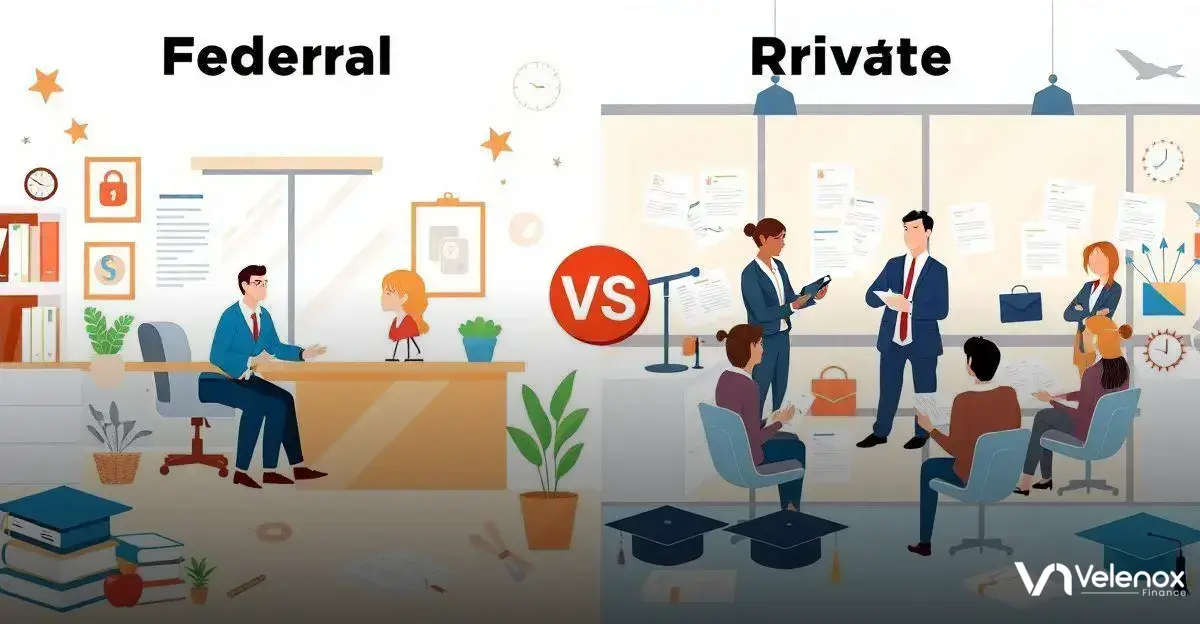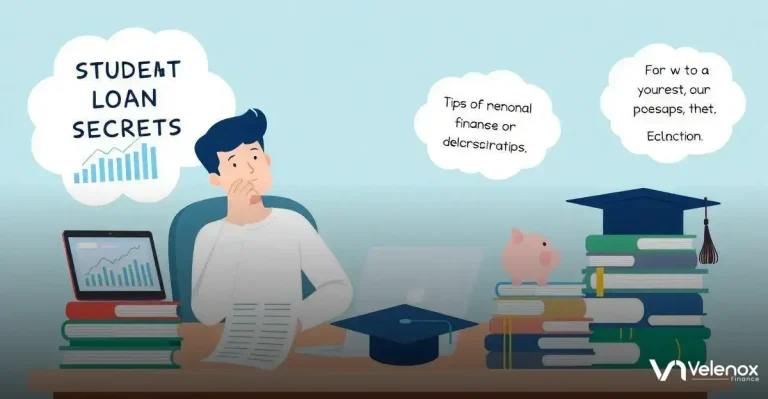Student loan can be daunting, but understanding them is crucial for your financial health.
With the right strategies and knowledge, you can manage your student loan debt effectively.
Understanding student loans: Types and terms
Understanding student loans is the first step in managing your finances effectively. Student loans come in various types, each with its own terms and conditions. The most common types are federal and private loans. Federal loans are funded by the government and generally offer lower interest rates and more flexible repayment options. These include Direct Subsidized Loans, Direct Unsubsidized Loans, and PLUS Loans.
Private loans, on the other hand, are offered by banks and financial institutions. They often have higher interest rates and less favorable repayment options. It’s essential to thoroughly understand the differences between these loan types to make informed decisions about your education financing, just as you would when considering alternative investments.
ADVERTISEMENT
Another critical aspect is the loan terms. Loan terms refer to the repayment period, interest rate, and any fees associated with the loan. Knowing these details can help you choose a loan that fits your budget. Federal loans often have repayment plans that accommodate various financial situations, including income-driven repayment plans for those whose income is low.
If you’re new to student loans, consider visiting your school’s financial aid office. They can provide valuable information on available loan options and help you understand borrowing limits and eligibility criteria. Managing your student loan starts with understanding these essential terms and types, ensuring that you’re prepared for the financial commitment ahead.
Strategies to repay your student loan faster

Repaying your student loan faster can save you money and reduce stress. Here are some effective strategies. First, consider making extra payments whenever possible. This reduces the principal balance, leading to lower overall interest costs.
Next, organize your loans based on interest rates. Focus on paying off higher interest loans first, as this will have a greater impact on your total repayment amount.
Another option is to refinance your student loans. This involves taking out a new loan with a lower interest rate to pay off your existing loans. However, be cautious; refinancing federal loans can lead to loss of important benefits, such as income-driven repayment plans.
You might also explore automatic payments. Many lenders offer a small interest rate reduction for setting up automatic withdrawals from your bank account. This not only helps you to avoid missed payments but can also contribute to faster repayment.
Finally, if your financial situation allows, consider making bi-weekly payments instead of monthly payments. This leads to one extra payment a year and reduces your loan term without much hassle.
Implementing these strategies can help you take charge of your student debt and pave the way to financial freedom.
The impact of interest rates on your student loan
The interest rate on your student loan can have a big impact on how much you pay over time. Interest rates determine how much extra money you will owe on top of the principal balance. Understanding how these rates work is crucial for managing repayment.
Student loans typically come with fixed or variable interest rates. Fixed rates remain the same throughout the life of the loan, providing predictability. In contrast, variable rates can fluctuate based on market conditions, which means your payments may change over time.
When choosing student loans, consider the overall cost of borrowing. A lower interest rate can significantly decrease your total repayment amount. Even a small difference in rates can lead to substantial savings. For example, a 1% difference in interest can save you hundreds or even thousands of dollars over the course of your loan.
Many factors influence the interest rate on your student loan, including your credit score, the loan type, and when you take out the loan. It’s important to maintain a good credit score and shop around for the best rates.
In summary, the impact of interest rates on your student loans is profound. By understanding how they affect your loan, you can make informed decisions to manage your repayment options efficiently.
Federal vs. private student loans: What you should know

When considering how to fund your education, you’ll encounter two main types of student loans: federal loans and private loans. Understanding the differences between these options is essential for making an informed decision.
Federal student loans are funded by the government. They usually offer more flexibility in terms of repayment and benefits. For example, federal loans include options for income-driven repayment plans, which can adjust your monthly payments based on your income. Additionally, many federal loans have low or no interest while you are still in school.
On the other hand, private student loans are offered by banks and financial institutions. These loans often come with higher interest rates and fewer repayment options. The terms of private loans depend largely on your credit score and income, so they may not be as easily accessible for some students.
Another critical difference is that federal loans often come with certain protections, like deferment, forgiveness programs, and forbearance options in times of financial hardship. These protections are commonly not available with private loans.
In summary, while both federal and private student loans can help you pay for education, it’s important to carefully evaluate your options and choose the best fit for your financial situation.
Top resources for student loan forgiveness
The following are some loan forgiveness programs available for individuals seeking financial relief:
Public Service Loan Forgiveness (PSLF): A program for individuals working in government or non-profit jobs, requiring 120 qualifying monthly payments.
Teacher Loan Forgiveness: For teachers in low-income schools for five consecutive years, providing up to $17,500 in forgiveness.
Income-Driven Repayment Plans: Forgiveness may be available after 20 or 25 years of qualifying payments depending on the repayment plan.
State-Specific Programs: Many states offer loan forgiveness tailored to professions like nursing or social work.
Advice: Be sure to check eligibility requirements and deadlines for each program to maximize your benefits.
Understanding your student loan options
Managing student loans can be challenging but is essential for your financial health. Both federal and private loans have distinct features that can significantly impact your repayment journey.
Federal loans typically offer lower interest rates, flexible repayment options, and forgiveness programs, making them a favorable choice for many students.
On the other hand, private loans may provide higher amounts but often come with less flexibility. It is crucial to evaluate your individual financial situation and consider all available resources for loan forgiveness.
By understanding the different types of loans and implementing strategic repayment plans, you can overcome your student debt and secure a brighter financial future.





